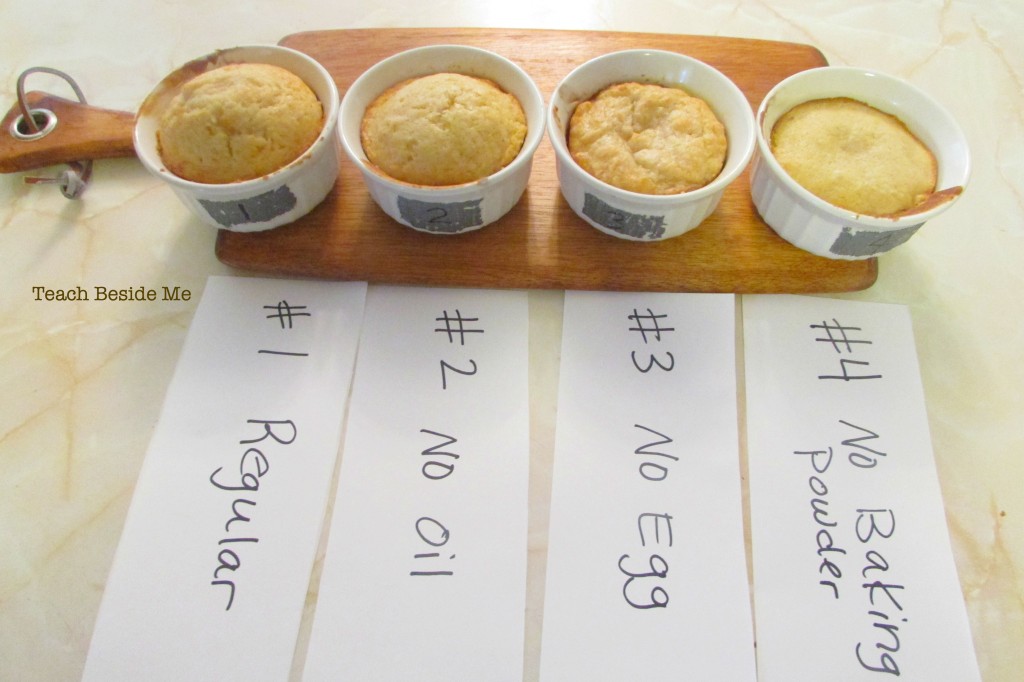Recipe for the Kitchen Chemistry Cake Experiement
You’ll need to measure and mix this set of ingredients four times to complete all four experiments.
- 6 tablespoons flour
- 3 tablespoons sugar
- 1 pinch of salt
- 2 or 3 pinches of baking powder
- 2 tablespoons milk
- 2 tablespoons cooking oil
- ¼ teaspoon vanilla
- ⅓ of an egg (Break egg into a cup; beat until mixed, then use approximately one third of it. Save the rest for 2 of the other cakes.
Mix the dry ingredients, then add the wet ingredients in the order listed. Mix well and pour into prepared dish. Bake at 350 for 15-20 minutes.
I prepared four ramekin dishes by labeling them with a piece of duct tape and a sharpie marker with numbers 1-4. Mix the batter for each cake individually so you can leave out the proper ingredient each time for the experiment. Label the first cake #1 and make it with all of the ingredients.
Then, go on to bake three more cakes, but with the following differences:
For cake # 2, leave the oil out.
For cake #3, leave the egg out.
For cake #4, leave the baking powder out.
After the cakes are cooled, remove them from the pans and cut them in half. Observe the differences in size, texture, appearance, etc. They are all edible, so you an taste each one and see which tastes the best. Discuss why each cake is different and what the purpose is of each ingredient in the cake.

The purpose of eggs in a cake: Eggs add structure, richness, leavening, color and flavor to baked products. Eggs become firm when heated, so it allows baked goods to add in structure. The fat in the eggs also adds a tenderness and richness to foods.
The purpose of oil in a cake: Oil is a fat. Fat in baked goods makes it more moist and tender after baked.
The purpose of baking powder in a cake: Baking powder is a leavened. This makes the cake rise. The more it rises, the more light and tender it will be when finished. The baking powder releases a carbon dioxide gas causing bubbling. The bubbling makes pockets of air causing the baked goods to expand.
No comments:
Post a Comment